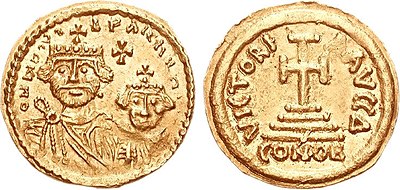Drinking Bowl
The Avars, a confederation of nomadic tribes of Central Asian origin, rose to power in eastern Europe in the 6th century. Most of the Avar finds come from the area of their strongholds in Pannonia (present-day Hungary). This treasure appears to have been deposited in the middle Danube region in the grave of an Avaric Khagan (king) who reigned in the second half of the 7th century. Later, the grave was robbed and the treasure brought to the area of modern Albania.
The hoard consists of 46 objects, including gold buckles, strap-ends for belts, and belt ornaments, all but two of which (this bowl and a goblet in the Archeological Museum, Istanbul) are in The Metropolitan Museum of Art, New York (inv. 17.190.1673-1712).
Relevantní obrázky
Relevantní články
AvařiAvaři v Evropě usazení v bývalé římské provincii Panonie byli aliancí několika skupin euroasijských nomádů různého původu; sehráli značnou roli v politickém uspořádání Balkánu, když založili svou říši avarský kaganát, který od konce 6. až do počátku 9. století pokrýval Panonskou pánev a značné oblasti střední a východní Evropy. .. pokračovat ve čtení
















